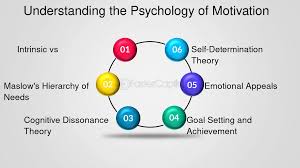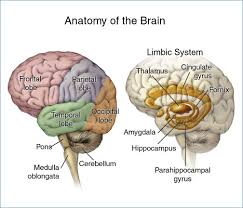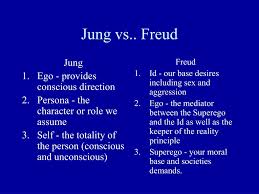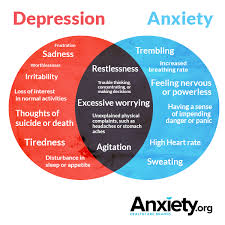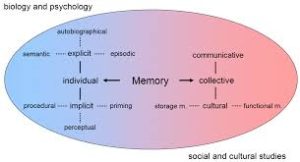Motivation is the psychological process that drives individuals to take action toward achieving their goals. It’s the inner force that influences how we set objectives, pursue them, and ultimately accomplish them. Whether it’s the ambition to succeed academically, excel in sports, or pursue personal interests, motivation plays a pivotal role in determining our level of effort and persistence. In this article, we will delve into the psychology of motivation, exploring what motivates us, how motivation works, and the different types and theories that shape our behavior.
What is Motivation?
Motivation is a complex, multifaceted concept that has intrigued psychologists, educators, and researchers for decades. At its core, motivation is what drives us to engage in certain behaviors. It can be thought of as the “why” behind our actions. It is influenced by a variety of internal and external factors, such as personal goals, desires, needs, emotions, and the environment around us.
In psychological terms, motivation is often broken down into two broad categories: intrinsic motivation and extrinsic motivation.
Intrinsic Motivation
Intrinsic motivation refers to the internal drive to engage in an activity because it is inherently enjoyable, interesting, or satisfying. When individuals are intrinsically motivated, they participate in an activity for the sake of the activity itself rather than for any external rewards or pressures. For example, a student who enjoys reading novels is intrinsically motivated to pick up a book, not because they are being rewarded for reading but because they find pleasure in the act itself.
Characteristics of intrinsic motivation include:
- Enjoyment: The activity is fun, interesting, or satisfying.
- Personal Growth: The activity leads to a sense of self-improvement.
- Autonomy: The individual feels in control and self-directed.
- Challenge: The activity provides a healthy level of challenge that leads to growth.
Extrinsic Motivation
Extrinsic motivation, on the other hand, refers to the drive to engage in an activity due to external rewards or pressures. These rewards can come in the form of tangible incentives like money, grades, or recognition, or intangible rewards such as praise, approval, or avoiding punishment. A student who studies hard to earn good grades or receive praise from parents is motivated extrinsically.
Characteristics of extrinsic motivation include:
- External rewards: Motivation is driven by tangible or intangible rewards.
- Social pressure: Motivation can be influenced by the desire to meet social expectations or avoid negative consequences.
- Task completion: The focus is often on completing the task rather than the enjoyment of the task itself.
Theories of Motivation
Psychologists have proposed various theories to explain how motivation works and how it influences behavior. Here are some of the most influential theories of motivation:
1. Maslow’s Hierarchy of Needs
One of the most well-known theories of motivation is Abraham Maslow’s Hierarchy of Needs. Maslow proposed that human needs can be arranged in a five-level pyramid, with each level representing a different category of needs. According to Maslow, individuals are motivated to fulfill these needs in a specific order, starting with the most basic physiological needs and progressing to higher-level psychological needs.
- Physiological Needs: These are basic survival needs such as food, water, and sleep.
- Safety Needs: This includes the need for security, safety, and stability in one’s life.
- Love and Belonging Needs: Humans need to feel a sense of love, affection, and belonging, which is fulfilled through relationships with others.
- Esteem Needs: These involve the need for respect, recognition, and a sense of accomplishment.
- Self-Actualization: This is the desire to achieve personal growth, self-fulfillment, and the realization of one’s potential.
Maslow believed that individuals must satisfy lower-level needs before they can focus on higher-level needs. For example, a student who is struggling to meet their physiological needs may find it difficult to focus on academic success (esteem needs) or personal growth (self-actualization).
2. Self-Determination Theory (SDT)
Self-Determination Theory, developed by Deci and Ryan, focuses on the role of intrinsic and extrinsic motivation in human behavior. It suggests that individuals are most motivated when they feel that they are in control of their actions and when their behavior is aligned with their values and interests.
According to SDT, there are three basic psychological needs that must be fulfilled for optimal motivation:
- Autonomy: The need to feel that one’s actions are self-directed and not imposed by others.
- Competence: The need to feel effective and capable in one’s activities.
- Relatedness: The need to feel connected to others and part of a community.
When these needs are met, individuals are more likely to experience intrinsic motivation, leading to greater engagement, persistence, and overall well-being.
3. Expectancy Theory
Expectancy Theory, proposed by Victor Vroom, suggests that motivation is influenced by the expected outcomes of behavior. According to this theory, individuals are motivated to act in a certain way if they believe that their actions will lead to a desired outcome.
Expectancy Theory is based on three key components:
- Expectancy: The belief that effort will lead to a certain level of performance.
- Instrumentality: The belief that performance will lead to a specific outcome or reward.
- Valence: The value an individual places on the expected reward or outcome.
For example, a student may be motivated to study for an exam if they believe that their efforts will lead to good grades (expectancy), which in turn will lead to a scholarship or recognition (instrumentality), and if they value the scholarship or recognition (valence).
4. Goal-Setting Theory
Goal-Setting Theory, developed by Edwin Locke, posits that setting specific and challenging goals leads to higher levels of motivation and performance. According to this theory, motivation is enhanced when individuals have clear, achievable goals that they are committed to pursuing.
Locke identified several key elements of effective goal setting:
- Clarity: Goals should be specific and clearly defined.
- Challenge: Goals should be challenging, but achievable.
- Commitment: Individuals should be committed to achieving their goals.
- Feedback: Regular feedback helps individuals stay on track and make adjustments as needed.
- Task Complexity: Goals should be appropriately complex for the individual’s abilities.
When individuals set goals that are specific, challenging, and achievable, they are more likely to stay motivated and work hard toward achieving them.
Factors Affecting Motivation
Motivation is not a static force—it is dynamic and influenced by various internal and external factors. Some of the key factors that can affect motivation include:
- Personal Interests: People are more motivated when they are engaged in activities that align with their personal interests and passions.
- Social Support: Encouragement and support from friends, family, and peers can boost motivation.
- Self-Efficacy: The belief in one’s ability to succeed in a task can significantly influence motivation. High self-efficacy leads to greater motivation to take on challenges.
- Feedback and Recognition: Positive feedback and recognition for achievements can enhance motivation, particularly for individuals motivated by external rewards.
- Environmental Factors: The environment in which an individual works or learns can impact motivation. A positive, supportive environment can foster intrinsic motivation, while a stressful or unsupportive environment may hinder motivation.
How to Enhance Motivation
Understanding the psychology of motivation can help individuals improve their motivation levels. Here are some strategies for boosting motivation:
- Set Specific, Achievable Goals: Clear and challenging goals provide direction and focus, which can enhance motivation.
- Cultivate Intrinsic Motivation: Focus on finding joy and satisfaction in the activity itself, rather than relying solely on external rewards.
- Foster a Growth Mindset: Embrace challenges and view failure as an opportunity for growth rather than a setback.
- Create a Positive Environment: Surround yourself with supportive people and create an environment that encourages focus and positive energy.
- Track Progress and Celebrate Achievements: Regularly monitor progress and reward yourself for achieving milestones along the way.
Conclusion
Motivation is a powerful force that drives human behavior. Whether it is intrinsic or extrinsic, motivation influences how we approach tasks, set goals, and ultimately achieve success. By understanding the various theories of motivation and the factors that influence it, we can better harness this energy to reach our full potential. Whether you’re a student striving for academic success, an athlete pushing your limits, or someone pursuing personal growth, understanding the psychology of motivation is the first step in unlocking your true potential.
